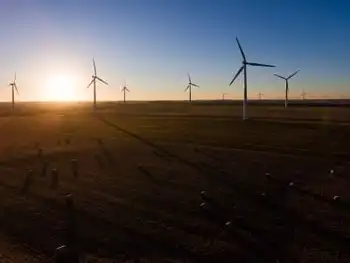Blackout Betrays Ailing N.A. Power Grid
SAN FRANCISCO, CA -- - The blackout on Thursday that deprived millions in North America of air conditioning on one of the hottest afternoons of the summer highlighted the vulnerability of the aging North American electric system.
Industry officials have long warned that the North American power transmission system, which saw its greatest expansion in the years following World War Two, is groaning under the weight of the heavy loads it carries today.
"We're a superpower with a third-world grid. We need a new grid," New Mexico Gov. Bill Richardson and a former U.S. energy secretary, told the CNN television network. "The problem is that nobody is building enough transmission capacity."
According to the Electric Power Research Institute (EPRI) in Palo Alto, California, U.S. power demand has surged 30 percent in the last decade, while transmission capacity grew a mere 15 percent.
And during muggy weather like the kind blanketing the Northeast on Thursday, air conditioning accounts for a hefty 30 percent of all power flowing over the lines, severely taxing an already overworked transmission network.
While still too early to tally how many people were affected by the outage, regional utilities said it was certainly one of the biggest blackouts ever.
It spread in a matter of seconds, tripping circuit breakers from the Great Lakes to New England to protect costly electrical equipment from a sudden voltage jolt.
It will take at least a couple of days to restore full service to everyone in the United States and Canada who lost power, grid operators predicted as they scrambled to pinpoint the problem. A key suspect was the failure of a high voltage line running from Ontario, Canada, into upstate New York. SHADES OF 1965
The blackout was reminiscent of the infamous 1965 outage, triggered by a lightning strike on a high voltage line running from Canada to New York, stranding about 30 million people without electricity along the populous New York-New England corridor.
The 1965 outage shocked the nation and gave birth to the North American Electric Reliability Council, a New Jersey-based industry group that works to ensure reliable service on the 500,000-mile (800,000 km) network of high voltage lines that serve 270 million U.S. and 31 million Canadian customers.
Despite the council's efforts and hard work by utilities to maintain the system, it teeters on days when too many megawatts are crowded onto too few lines. It is constantly at the mercy of severe weather.
"Each time we have to learn more about the transmission system and we have the opportunities to take steps to prevent a reoccurrence," said Terry Winter, president and CEO of the California Independent System Operator, which manages the state's grid.
Winter said the nation's electric grid urgently needs to be upgraded. But efforts to do so typically face fierce opposition in communities seeking to keep transmission towers and cables out of their neighborhoods.
Efforts to build up the grid have also been also stalled by a lack of incentive to invest in the tightly regulated power transmission business.
And investment money is a rare commodity throughout most of the utility sector as it struggles to get back on its feet financially in the aftermath of the California energy deregulation debacle and Enron's spectacular 2001 bankruptcy.
Related News

Maine Governor calls for 100% renewable electricity
BANGOR - The winds of change have shifted and are blowing Northward, as Maine’s Governor, Janet T. Mills, has put forth an act establishing a Climate Council to guide the state’s consumption to 80% renewable electricity in 2030 and 100% by 2050. The act, LR 2478 (pdf), also sets a goal of reducing greenhouse gas emissions by 45% in 2030 and 80% by 2050. The document will be submitted to the state Legislature for consideration.
The commission would have the authority to direct investor owned transmission and distribution utilities to run competitive procurement processes, and enter into long-term contracts for capacity…




